filter
-
Brand
- By Category
- Direction
- Date Range
633Events
Pictures
Events

Editorial
- 2024-03-08
- 1

Editorial
- 2024-03-08
- 1

Editorial
- 2023-06-16
- 1
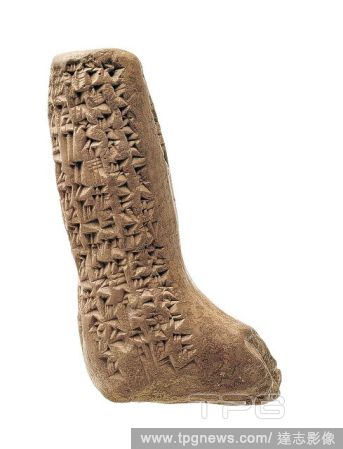
Editorial
- 2023-06-16
- 1

Editorial
- 2023-03-17
- 1
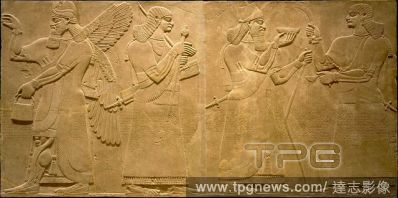
Editorial
- 2023-03-17
- 1

Editorial Research Team Decode Earliest Ever 'Writing' In Cave Paintings
- 2023-01-10
- 9
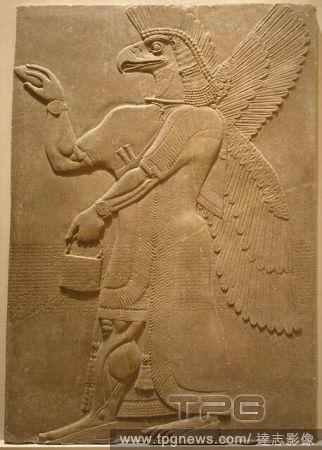
Editorial relief panel.
- 2022-12-25
- 1
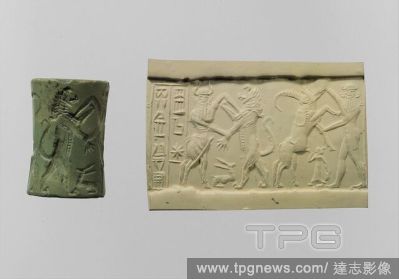
Editorial Cylinder seal and modern impression: bull-man combatting lion; nude hero combatting water buffalo; inscription.
- 2022-12-25
- 1

Editorial Cuneiform tablet: description of a lawsuit, found at Hazor, Israel Terracotta.
- 2022-12-25
- 1
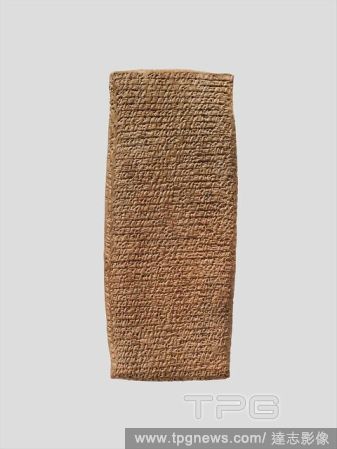
Editorial Cuneiform tablet: record of a lawsuit.
- 2022-12-25
- 1

Editorial Palace of Darius I (522-486 BC). Reliefs of the outer wall of the staircase of the Apadana depicting In the center, cuneiform inscription describing the construction of a staircase in the Palace of Persepolis by King Artaxerxes III Oco (425-388 BC). On...
- 2022-12-25
- 1
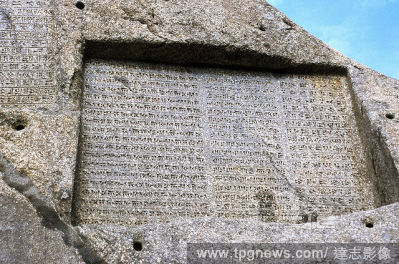
Editorial Achaemenid Empire. Ganjnameh. Ancient inscription carved in granite in 3 languages: Old Persian, Neo-Babylonian and Neo-Elamite, written by order of the sovereigns Darius the Great (521-485 BC) and Xerxes the Great (485-65 BC). Cuneiform alphabets. Nea...
- 2022-12-25
- 1
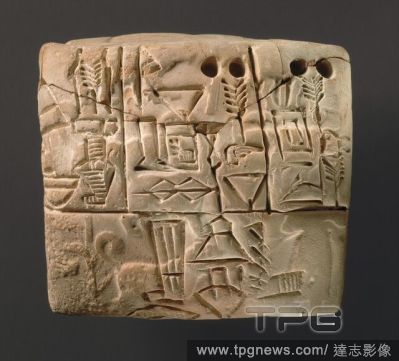
Editorial Cuneiform tablet: administrative account of barley distribution with cylinder seal impression of a male figure, hunting dogs, and boars.
- 2022-12-25
- 1

Editorial Mesopotamian art. Neo-Babylonian.Cylinder with cuneiform inscriptions of Nebuchadnezzar II listing building activities. 6th century BC. Ceramic. Metropolitan Museum of Art. New York. United States.
- 2022-12-24
- 1
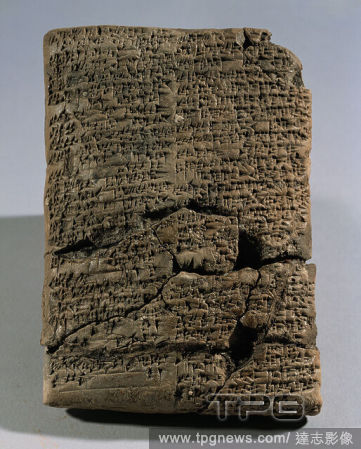
Editorial Tablet with cuneiform writing; prologue to the code of Hammurabi, king of Babylon. Early 18th BCE. Baked clay, 14,5 x 10,3 cm AO 10237.
- 2022-12-24
- 7

Editorial Chronological list of kings of Larsa from 2025-1763 BCE Terracotta prism with Cuneiform writing from the third year the reign of King Hammurabi, 1st Babylonian Dyn. (1792-1750 BCE). From Larsa, Iraq 29.5 x 10 cm-AO 7025.
- 2022-12-24
- 1

Editorial Cuneiform tablet: fragment of a contract, Neo-Babylonian or Achaemenid, ca. 7th?4th century B.C., Mesopotamia, Babylonian or Achaemenid, Clay, 3.3 x 3.7 x 1.7 cm (1 1/4 x 1 1/2 x 5/8 in.), Clay-Tablets-Inscribed.
- 2022-12-24
- 2

Editorial Cuneiform tablet: fragment, content uncertain, Neo-Babylonian or Achaemenid, ca. 7th?4th century B.C., Mesopotamia, Babylonian or Achaemenid, Clay, 2 x 2.4 x 2 cm (3/4 x 1 x 3/4 in.), Clay-Tablets-Inscribed.
- 2022-12-24
- 1
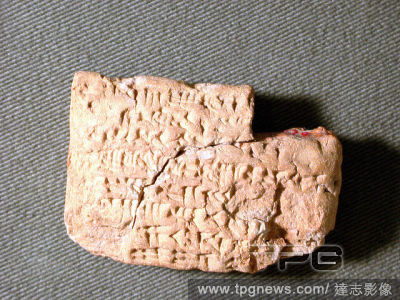
Editorial Cuneiform tablet: record of expenditures of silver, Ebabbar archive, Neo-Babylonian, ca. 605?562 B.C., Mesopotamia, probably from Sippar (modern Tell Abu Habba), Babylonian, Clay, 0.71 x 1.46 x 2.13 in. (1.8 x 3.71 x 5.41 cm), Clay-Tablets-Inscribed.
- 2022-12-24
- 2

Editorial Cuneiform tablet: fragment of a contract for the purchase of a house, Neo-Babylonian or Achaemenid, ca. 7th?4th century B.C., Mesopotamia, Babylonian or Achaemenid, Clay, 5 x 4.9 x 2.4 cm (2 x 1 7/8 x 1 in.), Clay-Tablets-Inscribed.
- 2022-12-24
- 1

Editorial Cuneiform tablet: fragment, Ebabbar archive, Neo-Babylonian or Achaemenid, ca. 7th?4th century B.C., Mesopotamia, probably from Sippar (modern Tell Abu Habba), Babylonian or Achaemenid, Clay, 0.75 x 1.34 x 1.73 in. (1.91 x 3.4 x 4.39 cm), Clay-Tablets-...
- 2022-12-24
- 1

Editorial Cuneiform tablet: fragment, Ebabbar archive, Neo-Babylonian, ca. 633 B.C., Mesopotamia, probably from Sippar (modern Tell Abu Habba), Babylonian, Clay, 0.83 x 1.42 x 2.17 in. (2.11 x 3.61 x 5.51 cm), Clay-Tablets-Inscribed.
- 2022-12-24
- 1
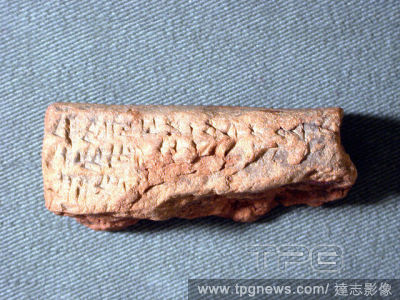
Editorial Cuneiform tablet: fragment, Ebabbar archive, Neo-Babylonian or Achaemenid, ca. 7th?4th century B.C., Mesopotamia, probably from Sippar (modern Tell Abu Habba), Babylonian or Achaemenid, Clay, 2.4 x .98 x .87 in. (6.1 x 2.49 x 2.21 cm), Clay-Tablets-Ins...
- 2022-12-24
- 1
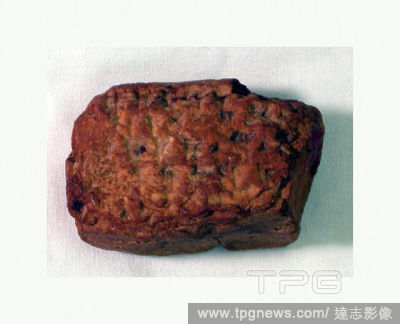
Editorial Cuneiform tablet: fragment of an account record (?), Neo-Babylonian, ca. 604?562 B.C., Mesopotamia, Babylonian, Clay, 2.6 x 4 x 2.3 cm (1 x 1 5/8 x 7/8 in.), Clay-Tablets-Inscribed.
- 2022-12-24
- 1

Editorial Cuneiform tablet: fragment, Neo-Babylonian or Achaemenid, ca. 7th?4th century B.C., Mesopotamia, probably from Kish or Babylon, Babylonian or Achaemenid, Clay, 0.87 x 1.89 x 2.24 in. (2.21 x 4.8 x 5.69 cm), Clay-Tablets-Inscribed.
- 2022-12-24
- 1

Editorial Cuneiform tablet: fragment of a lease, Neo-Babylonian or Achaemenid, ca. 7th?4th century B.C., Mesopotamia, Babylonian or Achaemenid, Clay, 2.2 x 2.3 x 1.5 cm (7/8 x 7/8 x 5/8 in.), Clay-Tablets-Inscribed.
- 2022-12-24
- 1
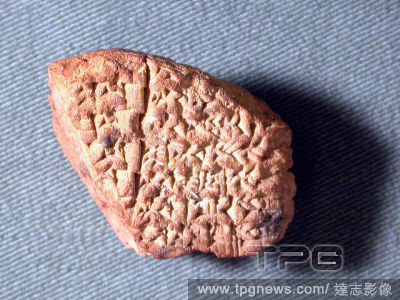
Editorial Cuneiform tablet: account of silver expenditures, Ebabbar archive, Neo-Babylonian, ca. 605?562 B.C., Mesopotamia, probably from Sippar (modern Tell Abu Habba), Babylonian, Clay, 1.1 x 1.26 x 1.93 in. (2.79 x 3.2 x 4.9 cm), Clay-Tablets-Inscribed.
- 2022-12-24
- 1

Editorial Cuneiform tablet: private letter, Old Babylonian, ca. 17th?16th century B.C., Mesopotamia, Babylonian, Clay, 5 x 4.7 x 2 cm (2 x 1 7/8 x 3/4 in.), Clay-Tablets-Inscribed,.
- 2022-12-24
- 1

Editorial Cuneiform tablet: fragment, Ebabbar archive, Neo-Babylonian or Achaemenid, ca. 7th?4th century B.C., Mesopotamia, probably from Sippar (modern Tell Abu Habba), Babylonian or Achaemenid, Clay, 1.1 x 1.5 x 2.01 in. (2.79 x 3.81 x 5.11 cm), Clay-Tablets-I...
- 2022-12-24
- 1

Editorial Cuneiform tablet: fragment of barley rations list, Ebabbar archive, Neo-Babylonian, ca. 7th?6th century B.C., Mesopotamia, probably from Sippar (modern Tell Abu Habba), Babylonian, Clay, 2.72 x 1 x .94 in. (6.91 x 2.69 x 2.35 cm), Clay-Tablets-Inscribed.
- 2022-12-24
- 2

Editorial Cuneiform tablet: fragment of a contract, Neo-Babylonian, ca. 626?539 B.C., Mesopotamia, probably from Babylon (modern Hillah), Babylonian, Clay, 5 x 4.4 x 2.4 cm (2 x 1 3/4 x 1 in.), Clay-Tablets-Inscribed.
- 2022-12-24
- 1

Editorial Cuneiform tablet: record of a judicial decision, Neo-Babylonian, ca. 555?539 B.C., Mesopotamia, probably from Babylon (modern Hillah), Babylonian, Clay, Clay-Tablets-Inscribed.
- 2022-12-24
- 1

Editorial Cuneiform tablet: fragment of a contract, Neo-Babylonian or Achaemenid, ca. 7th?4th century B.C., Mesopotamia, probably from Babylon (modern Hillah), Babylonian or Achaemenid, Clay, 3.5 x 6.2 x 2.2 cm (1 3/8 x 2 1/2 x 7/8 in.), Clay-Tablets-Inscribed.
- 2022-12-24
- 1

Editorial Cuneiform tablet: fragment of a promissory note, Neo-Babylonian or Achaemenid, ca. 7th?4th century B.C., Mesopotamia, Babylonian or Achaemenid, Clay, 1.2 x 3.3 x 1.5 cm (1/2 x 1 1/4 x 5/8 in.), Clay-Tablets-Inscribed.
- 2022-12-24
- 1

Editorial Cuneiform tablet: promissory note for silver, Esagilaya archive, Neo-Babylonian or Achaemenid, ca. 6th century B.C., Mesopotamia, probably from Babylon (modern Hillah), Babylonian or Achaemenid, Clay, 3.3 x 3.9 x 1.9 cm (1 1/4 x 1 1/2 x 3/4 in.), Clay-...
- 2022-12-24
- 1

Editorial Cuneiform tablet: fragment of a contract (?), Neo-Babylonian or Achaemenid, ca. 7th?4th century B.C., Mesopotamia, Babylonian or Achaemenid, Clay, 3.7 x 3.7 x 2.5 cm (1 1/2 x 1 1/2 x 1 in.), Clay-Tablets-Inscribed.
- 2022-12-24
- 1
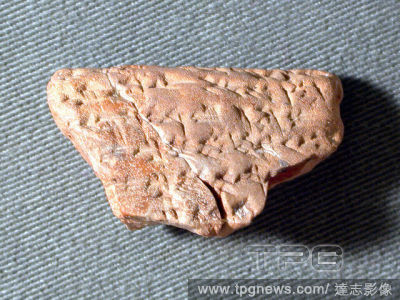
Editorial Cuneiform tablet: fragment of a field lease, Neo-Babylonian or Achaemenid, ca. 7th?4th century B.C., Mesopotamia, Babylonian or Achaemenid, Clay, 2.6 x 4.2 x 2 cm (1 x 1 5/8 x 3/4 in.), Clay-Tablets-Inscribed.
- 2022-12-24
- 1
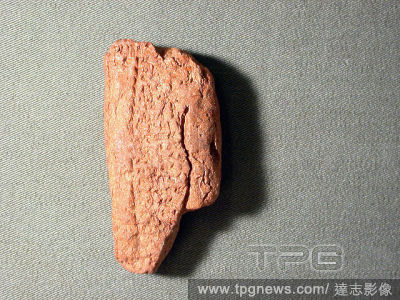
Editorial Cuneiform tablet: account of commodity allocations, Ebabbar archive, Neo-Babylonian, ca. 7th?6th century B.C., Mesopotamia, Sippar (?), Babylonian, Clay, 0.94 x 1.73 x 3.46 in. (2.39 x 4.39 x 8.79 cm), Clay-Tablets-Inscribed.
- 2022-12-24
- 1

Editorial Cuneiform tablet: blanket allocation list, Ebabbar archive, Neo-Babylonian, ca. 605?562 B.C., Mesopotamia, probably from Sippar (modern Tell Abu Habba), Babylonian, Clay, 2.64 x 4.25 x 1.08 in. (6.7 x 10.8 x 2.75 cm), Clay-Tablets-Inscribed.
- 2022-12-24
- 1
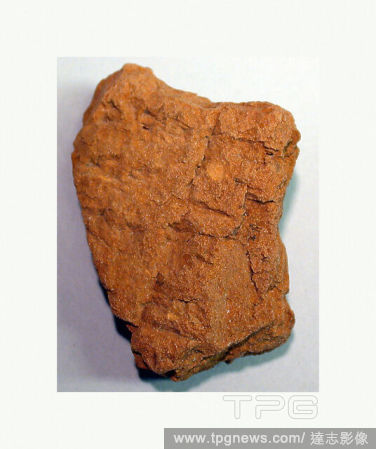
Editorial Cuneiform tablet: fragment, Ebabbar archive, Neo-Babylonian or Achaemenid, ca. 7th?4th century B.C., Mesopotamia, probably from Sippar (modern Tell Abu Habba), Babylonian or Achaemenid, Clay, 0.79 x 1.54 x 1.89 in. (2.01 x 3.91 x 4.8 cm), Clay-Tablets-...
- 2022-12-24
- 1

Editorial Cuneiform tablet: fragment, Ebabbar archive, Neo-Babylonian or Achaemenid, ca. 7th?4th century B.C., Mesopotamia, probably from Sippar (modern Tell Abu Habba), Babylonian or Achaemenid, Clay, 1.22 x 1.93 x 2.24 in. (3.1 x 4.9 x 5.69 cm), Clay-Tablets-I...
- 2022-12-24
- 1
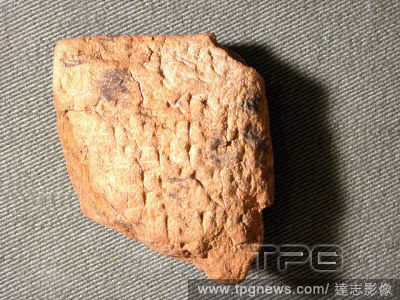
Editorial Cuneiform tablet: fragment, Neo-Babylonian or Achaemenid, ca. 7th?4th century B.C., Mesopotamia, Sippar (?), Babylonian or Achaemenid, Clay, 0.83 x 1.65 x 1.93 in. (2.11 x 4.19 x 4.9 cm), Clay-Tablets-Inscribed.
- 2022-12-24
- 1

Editorial Cuneiform tablet: fragment of a contract, Neo-Babylonian (?), ca. 626?539 B.C. (?), Mesopotamia, Babylonian, Clay, 2.2 x 3.5 x 1.4 cm (7/8 x 1 3/8 x 1/2 in.), Clay-Tablets-Inscribed.
- 2022-12-24
- 1
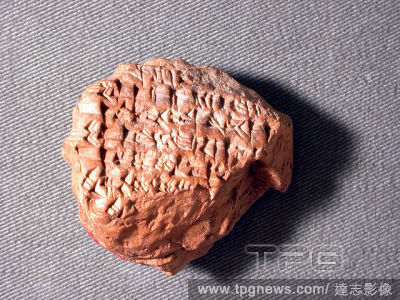
Editorial Cuneiform tablet: account of barley disbursement, Ebabbar archive, Neo-Babylonian (?), ca. 7th?6th century B.C., Mesopotamia, probably from Sippar (modern Tell Abu Habba), Babylonian (?), Clay, 1.06 x 1.85 x 2.09 in. (2.69 x 4.7 x 5.31 cm), Clay-Tablet...
- 2022-12-24
- 1

Editorial Cuneiform tablet: fragment, Neo-Babylonian, ca. 568 B.C., Mesopotamia, probably from Sippar (modern Tell Abu Habba), Babylonian, Clay, 0.91 x 1.06 x 1.54 in. (2.31 x 2.69 x 3.91 cm), Clay-Tablets-Inscribed.
- 2022-12-24
- 1

Editorial Cuneiform tablet: fragment, Ebabbar archive, Neo-Babylonian or Achaemenid, ca. 7th?4th century B.C., Mesopotamia, probably from Sippar (modern Tell Abu Habba), Babylonian or Achaemenid, Clay, 0.67 x 0.79 x 1.57 in. (1.7 x 2.01 x 3.99 cm), Clay-Tablets-...
- 2022-12-24
- 1
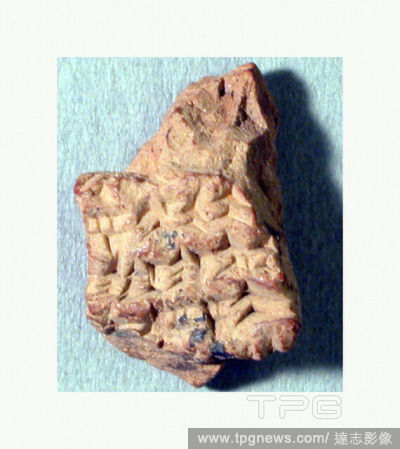
Editorial Cuneiform tablet: fragment, Ebabbar archive, Neo-Babylonian or Achaemenid, ca. 7th?4th century B.C., Mesopotamia, probably from Sippar (modern Tell Abu Habba), Babylonian or Achaemenid, Clay, 0.87 x 0.63 x 0.35 in. (2.21 x 1.6 x .9 cm), Clay-Tablets-In...
- 2022-12-24
- 2
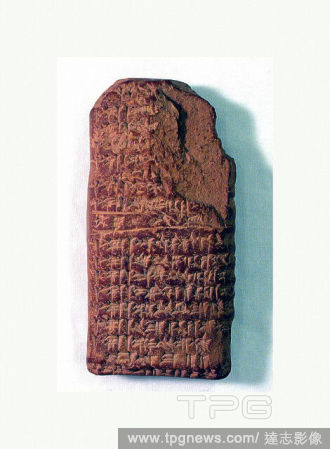
Editorial Cuneiform tablet: account of sheep holdings in households for offerings, Ebabbar archives, Neo-Babylonian, ca. 626?562 B.C., Mesopotamia, probably from Sippar (modern Tell Abu Habba), Babylonian, Clay, Thickness: 1 in. (2.5 cm), Clay-Tablets-Inscribed,.
- 2022-12-24
- 1
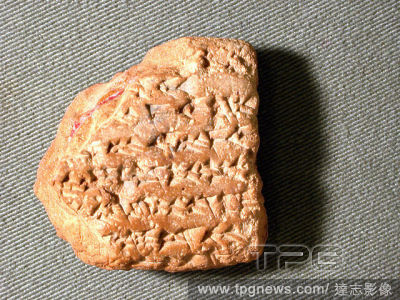
Editorial Cuneiform tablet: fragment, Ebabbar archive, Neo-Babylonian, ca. 605?562 B.C., Mesopotamia, Sippar (?), Babylonian, Clay, 0.83 x 1.77 x 1.81 in. (2.11 x 4.5 x 4.6 cm), Clay-Tablets-Inscribed.
- 2022-12-24
- 1

Editorial Cuneiform tablet: fragment of a quittance (?), Neo-Babylonian, ca. 625 or 603 B.C., Mesopotamia, Babylonian, Clay, 3.1 x 3.1 x 1.6 cm (1 1/4 x 1 1/4 x 5/8 in.), Clay-Tablets-Inscribed.
- 2022-12-24
- 1
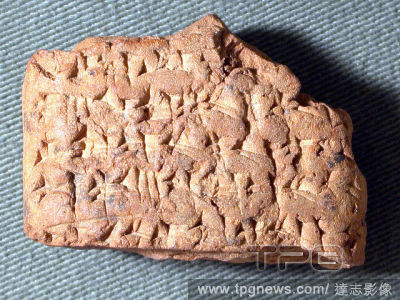
Editorial Cuneiform tablet: record of allocations of animal fodder, Ebabbar archive, Neo-Babylonian, ca. 7th?6th century B.C., Mesopotamia, probably from Sippar (modern Tell Abu Habba), Babylonian, Clay, 0.87 x 1.38 x 1.85 in. (2.21 x 3.51 x 4.7 cm), Clay-Tablet...
- 2022-12-24
- 1
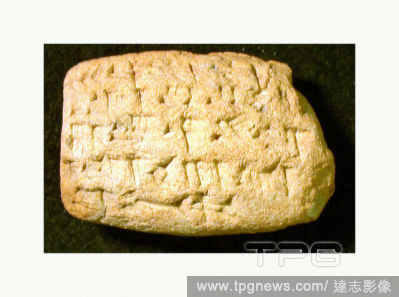
Editorial Cuneiform tablet: account regarding baskets, Ebabbar archive, Neo-Babylonian, ca. 574 B.C., Mesopotamia, probably from Sippar (modern Tell Abu Habba), Babylonian, Clay, 1.25 x 1.82 x .63 in. (3.18 x 4.62 x 1.6 cm), Clay-Tablets-Inscribed.
- 2022-12-24
- 1

Editorial Cuneiform tablet: fragment of a witness list and date formula, Neo-Babylonian or Achaemenid, ca. 7th?4th century B.C., Mesopotamia, probably from Babylon (modern Hillah), Babylonian or Achaemenid, Clay, 3 x 5 x 2.1 cm (1 1/8 x 2 x 7/8 in.), Clay-Tablet...
- 2022-12-24
- 1
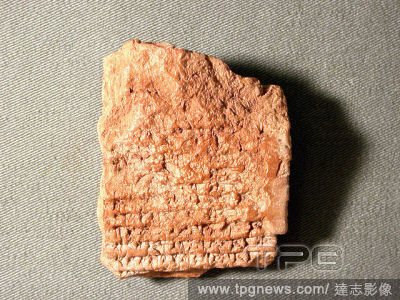
Editorial Cuneiform tablet: theological text fragment, Neo-Babylonian, ca. 626?539 B.C., Mesopotamia, Babylonian, Clay, 3 x 2 1/4 x 1 1/8 in. (7.6 x 5.8 x 2.9 cm), Clay-Tablets-Inscribed.
- 2022-12-24
- 1

Editorial Cuneiform tablet: fragment, Ebabbar archive, Neo-Babylonian or Achaemenid, ca. 7th?4th century B.C., Mesopotamia, probably from Sippar (modern Tell Abu Habba), Babylonian or Achaemenid, Clay, 0.94 x 0.87 x 1.5 in. (2.39 x 2.21 x 3.81 cm), Clay-Tablets-...
- 2022-12-24
- 1

Editorial Cuneiform tablet: fragment of a field lease, Neo-Babylonian or Achaemenid, ca. 7th?4th century B.C., Mesopotamia, Babylonian or Achaemenid, Clay, 3.1 x 4.8 x 2.3 cm (1 1/4 x 1 7/8 x 7/8 in.), Clay-Tablets-Inscribed.
- 2022-12-24
- 1

Editorial Cuneiform tablet: fragment, Ebabbar archive, Neo-Babylonian or Achaemenid, ca. 7th?4th century B.C., Mesopotamia, probably from Sippar (modern Tell Abu Habba), Babylonian or Achaemenid, Clay, 0.71 x 1.26 x 1.42 in. (1.8 x 3.2 x 3.61 cm), Clay-Tablets-I...
- 2022-12-24
- 1
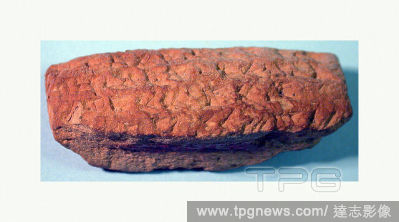
Editorial Cuneiform tablet: account of wool purchase, Ebabbar archive, Neo-Babylonian, ca. 568 B.C., Mesopotamia, probably from Sippar (modern Tell Abu Habba), Babylonian, Clay, 0.83 x 0.91 x 2.17 in. (2.11 x 2.31 x 5.51 cm), Clay-Tablets-Inscribed.
- 2022-12-24
- 2

Editorial Cuneiform tablet: account of delivery of field rent, Ebabbar archive, Neo-Babylonian (?), ca. 7th?6th century B.C., Mesopotamia, probably from Sippar (modern Tell Abu Habba), Babylonian (?), Clay, 0.55 x 0.94 x 1.22 in. (1.4 x 2.39 x 3.1 cm), Clay-Tabl...
- 2022-12-24
- 1

Editorial Cuneiform tablet: fragment of an accounting record (?), Neo-Babylonian or Achaemenid, ca. 7th?4th century B.C., Mesopotamia, Babylonian or Achaemenid, Clay, 2.6 x 4.7 x 1.7 cm (1 x 1 7/8 x 5/8 in.), Clay-Tablets-Inscribed.
- 2022-12-24
- 1

Editorial Cuneiform tablet: fragment of a contract, Neo-Babylonian or Achaemenid, ca. 7th?4th century B.C., Mesopotamia, Babylonian or Achaemenid, Clay, 3.6 x 5.4 x 2.6 cm (1 3/8 x 2 1/8 x 1 in.), Clay-Tablets-Inscribed.
- 2022-12-24
- 1

Editorial Cuneiform tablet: fragment of a contract, Neo-Babylonian, ca. 544 B.C., Mesopotamia, probably from Babylon (modern Hillah), Babylonian, Clay, 2.5 x 3.9 x 1.5 cm (1 x 1 1/2 x 5/8 in.), Clay-Tablets-Inscribed.
- 2022-12-24
- 1

Editorial Cuneiform tablet: flour deliveries for rent payment, Ebabbar archive, Neo-Babylonian, ca. 7th?6th century B.C., Mesopotamia, probably from Sippar (modern Tell Abu Habba), Babylonian, Clay, 1.1 x 2.36 x .77 in. (2.8 x 6 x 1.95 cm), Clay-Tablets-Inscribed.
- 2022-12-24
- 2
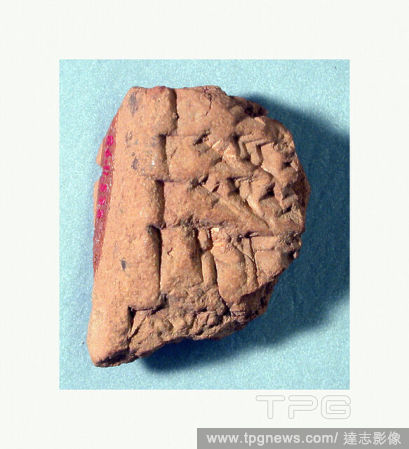
Editorial Cuneiform tablet: fragment, Ebabbar archive, Neo-Babylonian or Achaemenid, ca. 7th?4th century B.C., Mesopotamia, probably from Sippar (modern Tell Abu Habba), Babylonian or Achaemenid, Clay, 0.63 x 1.18 x 1.54 in. (1.6 x 3 x 3.91 cm), Clay-Tablets-Ins...
- 2022-12-24
- 2

Editorial Cuneiform tablet: account of barley disbursements to prebendaries, Ebabbar archive, Neo-Babylonian, ca. 550 B.C., Mesopotamia, probably from Sippar (modern Tell Abu Habba), Babylonian, Clay, 0.89 in. (2.25 cm), Clay-Tablets-Inscribed.
- 2022-12-24
- 1

Editorial Cuneiform cylinder: inscription of Nebuchadnezzar II describing the construction of the outer city wall of Babylon, Neo-Babylonian, ca. 604?562 B.C., Mesopotamia, Babylon (?), Babylonian, Clay, 48.62 x 2.75 x 2.87 in. (12.35 x 7 x 7.3 cm), Clay-Tablets...
- 2022-12-24
- 1
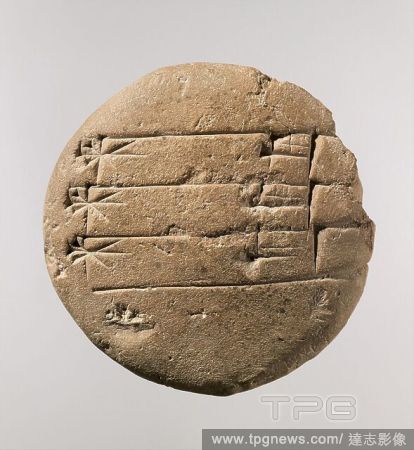
Editorial Cuneiform tablet: student exercise tablet, Old Babylonian, ca. 20th?16th century B.C., Mesopotamia, Babylonian, Clay, 7.6 x 2.9 cm (3 x 1 1/8 in.), Clay-Tablets-Inscribed, This lenticular clay tablet was used to help scribes learn to write the Sumerian...
- 2022-12-24
- 1
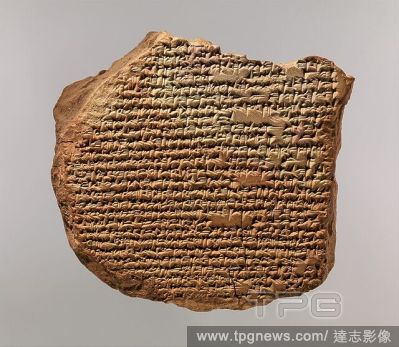
Editorial Cuneiform tablet: hymn to Marduk, Neo-Babylonian (?), 1st millennium B.C., Mesopotamia, Babylonian (?), Clay, 3 1/2 x 3 7/8 x 1 1/8 in. (9 x 9.8 x 2.9 cm), Clay-Tablets-Inscribed, The god Marduk first became an important god in the early second millenn...
- 2022-12-24
- 1

Editorial Mesopotamia. Code of Hammurabi. Babylonian law code. 1754 BC. Akkadian language. Cuneiform script. Louvre Museum. Paris. France.
- 2022-12-24
- 1
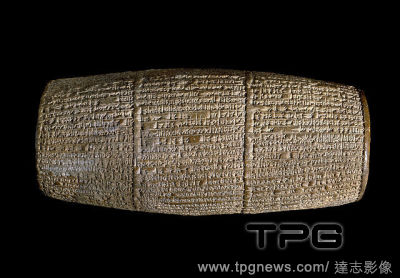
Editorial Cylinder of Nebuchadnezzar II, southern Iraq, Neo-Babylonian dynasty, 604-562 BCE. The cuneiform text describes the three palaces which Nebuchadnezzar built for himself in Babylon. The first palace was a rebuilding of the palace used by his father Nabo...
- 2022-12-24
- 1

Editorial Letter to Amenhotep IV (Akhenaten) from Burnaburias, a king of the Kassite dynasty of Babylonia. It is written in Mesopotamian Akkadian, the diplomatic language of the period. This clay tablet is one of 382 cuneiform documents discovered in 1887 in Egy...
- 2022-12-24
- 5
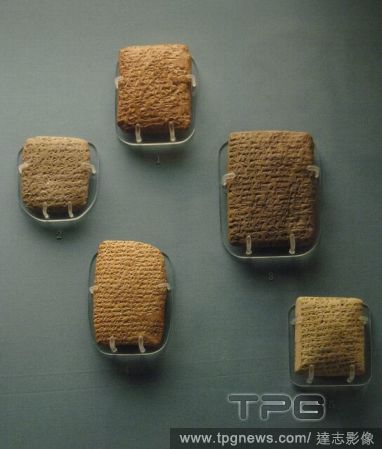
Editorial Amarna Letters. 14th century BC. Clay tablets with cuneiform script, mostly written in Akkadian. Designate a file of correspondence, mostly diplomatic, between the Egyptian administration and its representatives in Canaan and Amurru. 1350-1330 BC. From...
- 2022-12-24
- 1

Editorial Mesopotamian Art. Middle Babylonian. Limestone kudurru from the riegn of Marduk-nadin-ahhe (1099?1082 BC). Block of black limestone. The upper portion is carved with symbols. Inscribed with cuneiform script. Land grant. British Museum. London. United K...
- 2022-12-24
- 4

Editorial Cylinder of Cyrus the Great with text written in akkadian cuneiform. Clay. Describes the conquest of Babylon in 539 BC and the capture of King Nabonidus by Cyrus the Great, king of Persia (559-530 BC). British Museum. London. England. United Kingdom.
- 2022-12-24
- 1
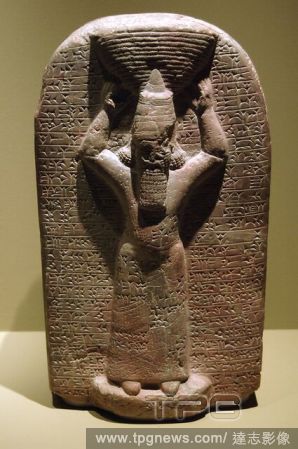
Editorial Mesopotamia. Stela of Ashurbanipal. The inscription records that he restored the Esagil temple of Marduk, Babylon. 665-653BC. Cuneiform script. Babylon exposore. Louvre. Paris. France.
- 2022-12-24
- 6
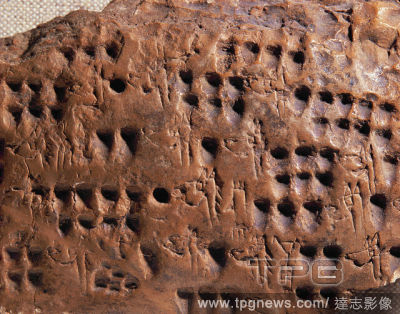
Editorial Inventory of three different types of equines (horse-family). Terracotta tablet with cuneiform writing; from Susa, Iran (2900 BCE, Proto-Elamite) 13.4 x 9 cm Sb 6910.
- 2022-12-24
- 1

Editorial Alabaster panel depicting King Tiglath-Pileser III in his chariot under an umbrella and a cuneiform inscription which related their campaigns, taking the city of Astartu. 730-727 BC. From the Palace of Nimrud. British Museum. London. United Kingdom.
- 2022-12-24
- 1
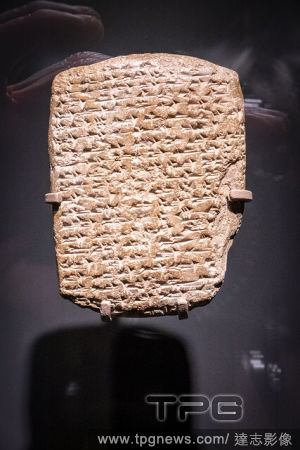
Editorial tablet with cuneiform text, missive from the city of Irqata, clay, reign of Amenhotep IV/Akhenaten, 1352-1336 BC, Tell el-Amarna, egypt, collection of the British Museum.
- 2022-12-24
- 3

Editorial Relief from the Palace of Ashshurnatsirapal II Representing a Deity before a Sacred Tree and a Cuneiform Inscription.
- 2022-04-24
- 1

Editorial Plaque fragment with chariot scenes inscribed with the Urartian royal name Argishti.
- 2022-04-24
- 1

Editorial Pottery depicting a bull, with cuneiform inscriptions dedicated to Inshusinak on its back. It was found at the entrance of Chogha Zanbil ziggurat, near Susa, 2200 BC. The National Museum of Iran. Tehran.
- 2022-01-18
- 1

Editorial Votive offering. Fragment of a stone stele dedicated by Itur-Ashdum. First Dynasty of Babylon, c. 1760-1750 BC. Probably from Sippar, southern Iraq. Limestone. The cuneiform inscription states that a high official called Itur-Ashdum dedicated a statue ...
- 2022-01-18
- 1
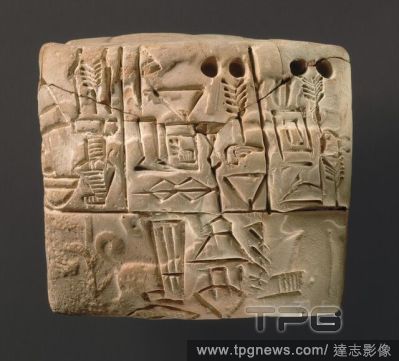
Editorial Cuneiform tablet: administrative account of barley distribution with cylinder seal impression of a male figure, hunting dogs, and boars.
- 2022-01-18
- 1
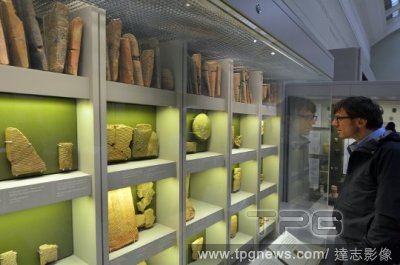
Editorial Visitor in the British Museum look at cuneiform tablets
- 2021-09-23
- 1
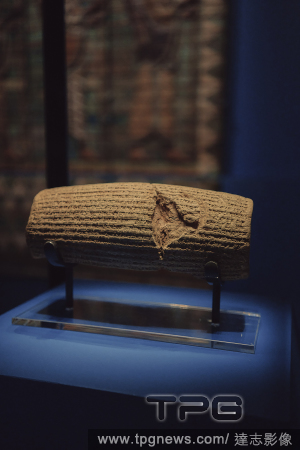
Editorial The Cyrus Cylinder, inscribed in cuneiform, on display in the exhibition “Epic Iran” at the Victoria and Albert Museum in London, May 28, 2021. (Tom Jamieson/The New York Times)
- 2021-06-01
- 1
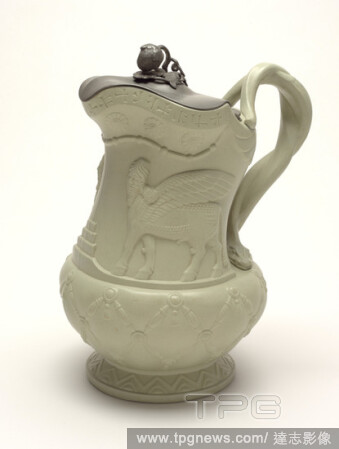
Editorial Nineveh, Ridgway & Abington, Molded stoneware, metal (lid), Jug with spreading foot and twisted handle in the form of a snake. Molded relief decoration showing Assyrian lamassu. Cuneiform below lip. Metal lid with floral knob., England, ca. 1851, ceram...
- 2021-02-22
- 1

Editorial Cuneiform tablet in the shape of a leg, clay, Total: Height: 7.00 cm; Width: 4.20 cm; Depth: 2.40 cm, Inscription: covering the entire object, ceramic, leg, foot, letters, alphabet, writing, It is a right lower leg with foot and ankle, which is covered...
- 2021-02-21
- 1
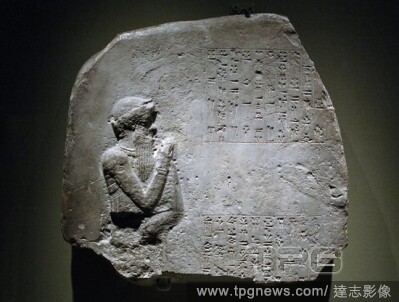
Editorial Votive offering. Fragment of a stone stele dedicated by Itur-Ashdum. First Dynasty of Babylon, c. 1760-1750 BC. Probably from Sippar, southern Iraq. Limestone. The cuneiform inscription states that a high official called Itur-Ashdum dedicated a statue ...
- 2021-02-21
- 1
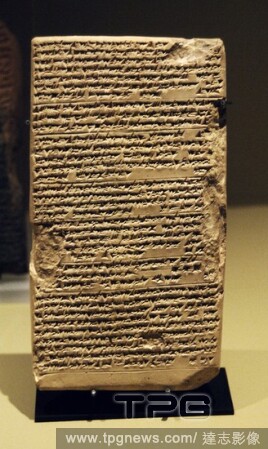
Editorial The "Esagila" tablet. Document copied from older texts in 229 BC, written in Uruk from an original of Borsippa. The tablet explains the history and engineering of the 7-floor high Etemenanki temple (the equivalent of the Tower of Babel in the Bible). C...
- 2021-02-21
- 4
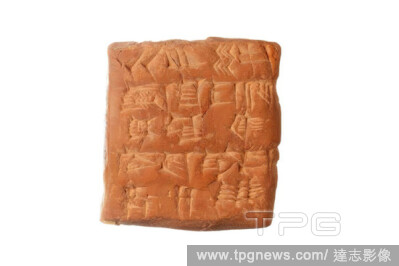
Editorial A clay tablet with a cuneiform inscription. The text is an acknowledgment of receipt for a residual quantity of barley as rental income for farmers., Inscription, pottery, clay, L 3.8 cm, B 3.6 cm, H 1.7 cm, Ur III Period 2112-2004 BC, Iraq.
- 2021-02-21
- 1
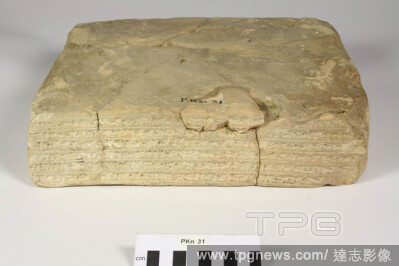
Editorial A brick with a cuneiform inscription. The name of Silhak-Insusinak, king of Elam (ca. 1150-1100 BC), is called., Building element, inscription, pottery, L 33 cm, W 33 cm, H 9 cm, Middle Elamite Period 1150-1100 BC, Iran.
- 2021-02-21
- 1

Editorial A stone tablet with a cuneiform inscription. It is an example of the so-called Mullissu inscription, several examples of which are known. The text is dedicated to Mullissu or the goddess Ninlil and told about the renovation of her temple by King Assurb...
- 2021-02-21
- 1

Editorial The hollow cylinder carries a religious inscription in cuneiform script of the great Babylonian king Nebuchadnezzar II. Triumphantly, he announces the construction of the temple dedicated to Lugal-Maradda, the chief god of the ancient city of Marad in ...
- 2021-02-21
- 1

Editorial A clay tablet with an economic text in cuneiform writing, inscription, pottery, clay, L 3 cm, W 5 cm, H 1.5 cm, Neo Babylonian Period, Achemenid Period 612-330 BC, unknown.
- 2021-02-21
- 1

Editorial A clay tablet with a cuneiform inscription. In the text, one Imgurrum guarantees the return of the suspected person Ubarrum. This is suspected or is already convicted for robbing property from the house of Ilsju-nasir. He is released for five days. If ...
- 2021-02-21
- 2

Editorial A fragment of a clay tablet with cuneiform writing. The text consists of 16 lines and a stamp print is visible on the top edge. Despite the fact that the text is only partially preserved, it can be deduced from line 1 that it is a procedural document.,...
- 2021-02-21
- 1
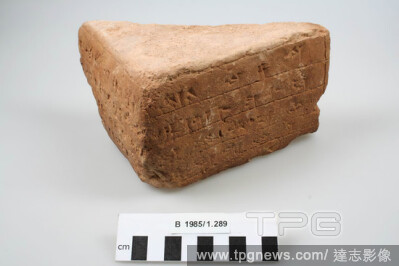
Editorial A triangular brick with a cuneiform text, made of yellow-orange clay., Building element, inscription, pottery, L 16 cm, W 13.5 cm, H 10 cm, Middle Elamite Period 1500-1100 BC. , Iran.
- 2021-02-21
- 1
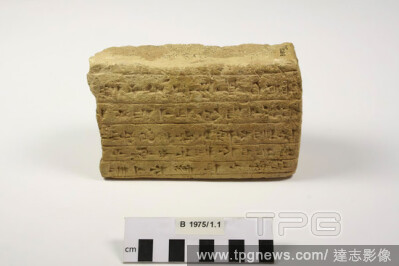
Editorial A fragment of a cornerstone with a cuneiform inscription running on two sides. King Untas-Napirisa of Elam (1275-1240 BC) is mentioned on it., Building element, inscription, pottery, L 7 cm, W 16 cm, H 9 cm, Middle Elamite Period 1275-1240 BC, Iran.
- 2021-02-21
- 1
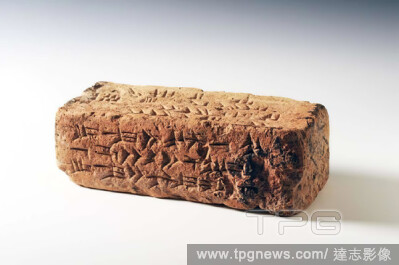
Editorial A large rectangular brick with a cuneiform text on two of the long sides. Remains of bitumen are visible on at least three sides. On the brick is the name of the Assyrian king Salmaneser III, who reigned from 858-824 BC. In addition to the name and num...
- 2021-02-21
- 1
 Loading
Loading 